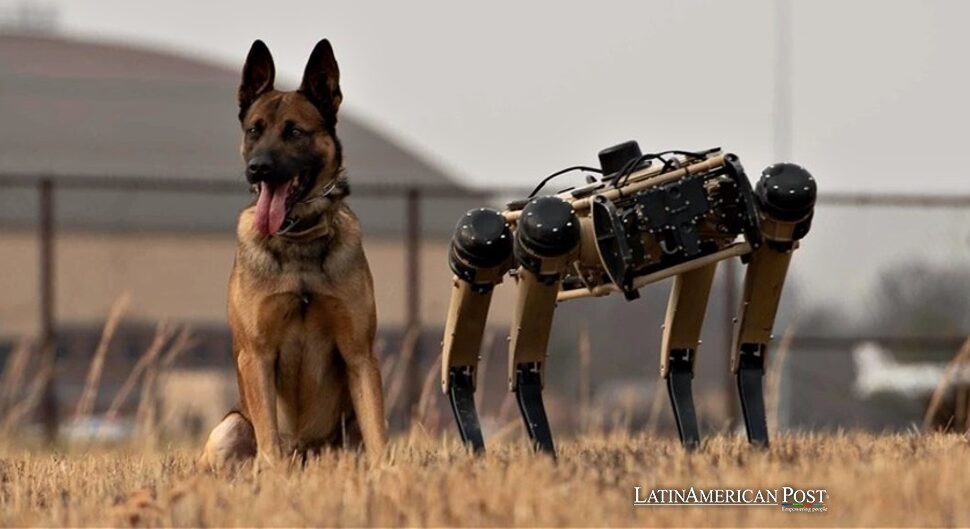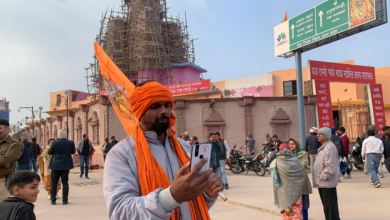The Latest High-Tech that Tracks Latin Migrants from Desert to Sea

Motion-triggered cameras buried in Sonoran dust, drones hovering over the Atlantic’s moonlit swells, and software rifles silently through your phone at customs desks—Latin Americans on the move say today’s frontier sits everywhere and nowhere at once, and it never blinks.
A Desert Where the Cactus Talks
María Álvarez swears she heard the shutter click.
It was 3 A.M., pitch-black near Sasabe, Arizona, the only light of the Milky Way and Tijuana’s orange glow far behind her. Then—ch-chak—a sound like a toy camera. Two days later, in a detention cell cooled to refrigerator levels, an agent flipped a tablet toward her. On-screen stood María, frozen mid-stride, backpack bristling with water bottles. “Why lie?” the agent asked in Spanish. “We saw you the moment you crossed.”
The shot came from a motion-activated Bushnell Core bolted to a mesquite branch on private ranchland. Cameras like it—8,000 and counting—now line the Río Grande corridor, their feeds linking to Palantir’s Gotham platform, a $30-million contract ICE signed in April. Stevie Glaberson, a privacy scholar at Georgetown, tells EFE the software sifts those images alongside electricity bills, credit card swipes, and state driver-license records, “building dossiers so detailed they verge on biographies.” ICE insists the goal is “situational awareness.” Critics call it a panopticon without warrants.
Even citizens feel the flash. Texas trucker Rubén Morales learned his plates were flagged because his ex-tenant—an undocumented welder—once borrowed the pickup. Within weeks, Morales says, he faced three “random” Border Patrol stops 200 miles north of Laredo. “I was late on deliveries, lost a contract,” he sighs. “All because a camera remembered something my truck forgot.”
Atlantic Shadows and Mediterranean Mirrors
Fisherman Eloy Cabrera points to a windsock topping a concrete tower on Lanzarote’s rocky shore. Inside sits SIVE, Spain’s Integrated Exterior Surveillance System. Radar pulses sweep 20 nautical miles; infrared lenses pierce moonless nights. Officials praise SIVE for rescuing thousands. Cabrera shakes his head. “Lately, the patrol boats don’t come out to save but to push,” he says, recalling July’s incident when a Mauritanian cayuco bobbed outside Spanish waters under watchful drones until a Moroccan cutter arrived.
A 2023 Euromed Rights inquiry traced €19 million in EU funds to drone upgrades and electro-optical cameras for SIVE. Yet NGO Caminando Fronteras logged more than 10,000 Atlantic route deaths last year—a record high. Maritime safety researcher Marta Castrillo argues in Marine Policy that radar merely displaces boats onto longer, deadlier courses, “like squeezing one end of a balloon.”
Across the water in Greece, Amnesty International’s Beatriz Martos describes a different lens: airport “phone-scrape” rooms where asylum-seekers hand over unlocked mobiles. Martos says officers clone even deleted files and cloud backups, which is a default practice in Austria, Denmark, and the UK. Cambridge scholar Matthew Blanchard calls it a violation of proportionality: “Guilt is presumed in the SIM card.” The EU’s ROBORDER prototypes—autonomous drones laced with facial recognition—hover above, testing algorithms on people who cannot opt out. “Europe once exported liberty,” Martos sighs. “Now it exports code that cages.”
When the Stadium Floodlights Become Searchlights
Football was supposed to be our night off, says Carmen García of El Monte, California. She paid $350 for a VIP seat at Mexico’s Gold Cup opener in Inglewood. However, rumors swirled after DHS announced that “federal resources” would secure venues. The tailgate vanished. Pancho Villa’s Army brass band packed away trumpets. Attendance sagged by 12,000.
A Migration Policy Institute report counts 37 stadium-adjacent detentions since 2019, many from license-plate scans in parking lots. Georgetown’s Glaberson warns Palantir’s Gotham can ingest those scans in real-time. At SoFi Stadium, everything seemed normal—no checkpoints, no raids—but the fear was enough. García watched Mexico win 3-2, then slipped out before stoppage time. “We cheered with one eye on the exits,” she tells EFE. With the 2026 World Cup coming to 11 U.S. cities, she wonders if migrants risk stadium turnstiles or stay home with contraband rum and a hacked TV feed.
Even beyond U.S. borders, the stands feel watched. Canadian activist Luis Velásquez says RCMP officers visited his Toronto apartment after he photographed facial-recognition kiosks during a CONCACAF qualifier. Officers cited “public safety concerns.” Velásquez calls it intimidation. “They knew my Salvadoran passport expired years ago—how?” he asks, waving the warning notice left on his door.
Data That Never Dies and Walls You Can’t See
Unlike bricks or barbed wire, digital perimeters remain after policy shifts. Hungary lost a 2023 European Court case over mass phone searches—yet the hardware still sits in border vans, ready when laws tilt again. In the U.S., judicial limits on Palantir access remain vague; a future president could widen queries with a memo. University of California sociologist Tanya Golash-Boza warns that deportation tools seep into domestic policing, citing 2020 protests when ICE plate readers tracked Black Lives Matter rallies.
The retired Spanish Guardia Civil commander (name withheld) tells EFE that each SIVE upgrade came wrapped in humanitarian language, “but ministers only asked one question: how many arrivals will it cut?” He now wonders what happens when commercial ports adopt similar sensors to scan truck drivers or when private landlords buy utility bill analytics to vet tenants. “Borders,” he sighs, “have become a business model.”
For migrants like María Álvarez, the sensors turn the journey into chess against an omniscient opponent. She was deported within 48 hours—her captured image triggering a “repeat border crosser” alert. Three months later, she prepares to try again via the Darién Gap. This time, she’ll wrap her phone in aluminum foil, travel to the new moon, and pay extra for a guide who claims to know ridge routes drones can’t map. “The camera won’t surprise me twice,” she says, though she knows more lenses wait beyond the jungle.
Also Read: Colombia’s Fighter Acquisition in Flux as China Pushes J-10CE Bid
Credits: Field interviews and images courtesy of EFE correspondents in Washington, Brussels, Madrid, Los Angeles, and Quito. Expert quotations from Stevie Glaberson (Georgetown Center on Privacy & Technology), Beatriz Martos (Amnesty International), and Matthew Blanchard (University of Cambridge). Maritime data drawn from Euromed Rights 2023 Atlantic Monitor and NGO Caminando Fronteras casualty ledger.





